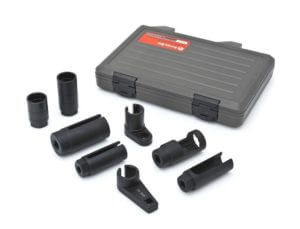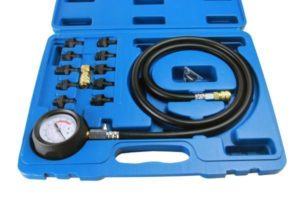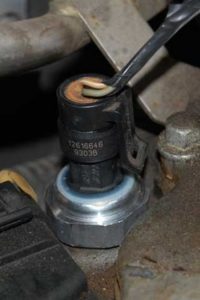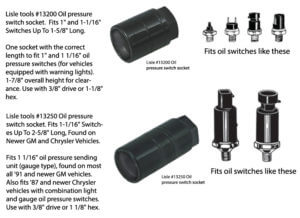Test oil pressure with a gauge
How to test oil pressure with an oil pressure gauge
What tools you need to test oil pressure with a gauge
Here’s how to test oil pressure using a mechanical gauge. A mechanical or digital oil pressure gauge attaches to your engine

Gearwrench brand oi pressue sensor socket set
in place of the oil pressure sensor, so you’ll have to remove the sensor first. To do that you’ll need a special oil pressure sensor socket. Rent a set of oil pressure sensor sockets and an oil pressure gauge from a local auto parts store.

Oil pressure gauge tester kit includes adapters to fit your engine.
Disconnect the electrical connector
Late model vehicles use locking electrical connectors with an internal silicone seal to keep out water and road grit. These connectors often have locking devices  that must be removed or slid to the side to allow removal. Or, the connector may have a spring loaded catch. Over time the plastic connector can become brittle and crack, so exercise caution when removing the connector.
that must be removed or slid to the side to allow removal. Or, the connector may have a spring loaded catch. Over time the plastic connector can become brittle and crack, so exercise caution when removing the connector.
Unscrew the old oil pressure sensor. Lefty loosey, righty tighty on these units.
Attach the oil pressure gauge
Install the gauge fitting and hose to the oil pressure sensor port and tighten snuggly.
Test oil pressure
Start the engine and note the gauge reading at startup. A good oil pump should generate 30-60-psi at startup and then drop as the engine heats up and the oil thins. Once the engine is fully warmed up, oil pressure must exceed 7-psi at idle and should rise and fall as you increase and reduce RPMs. If the oil pressure drops below 7-psi, that’s a sign of a serious problem. See this post
Replace oil pressure sensor
See this post on how to replace oil pressure sensor
©, 2017 Rick Muscoplat
Posted on by Rick Muscoplat

